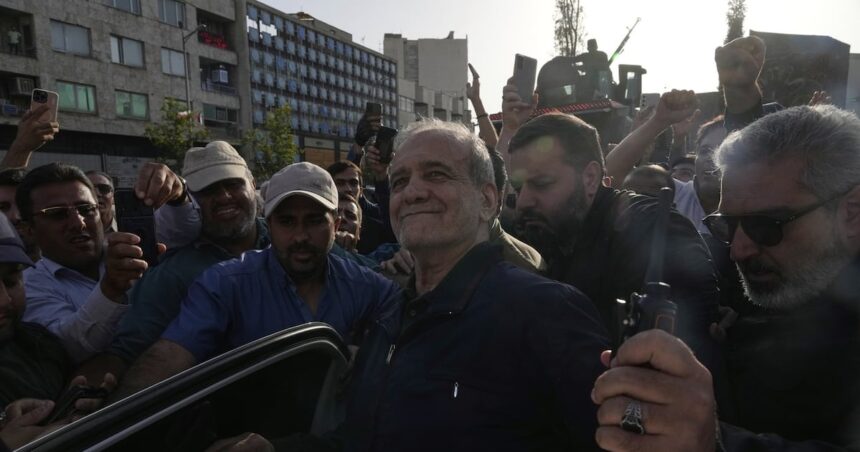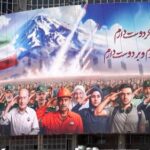The suburban community center outside Toronto was packed beyond capacity last night. Nervous whispers filled the room as Farzad Mobasher, a 55-year-old engineer who left Tehran in 1999, gripped the microphone.
“My sister called from Isfahan this morning. Their neighborhood is just 30 kilometers from one of the targeted facilities,” Mobasher told the crowd, his voice wavering. “She says people are panicking, stockpiling food. No one knows what comes next.”
This scene has played out across Canadian cities since American forces launched precision strikes against Iran’s nuclear infrastructure three days ago. For the nearly 210,000 Iranians living in Canada, the military action has transformed an already tense geopolitical situation into an intensely personal crisis.
The strikes, which the White House described as “limited and proportional,” targeted enrichment facilities in Natanz and Fordow after international inspectors reported uranium enrichment reaching 84% purity—dangerously close to weapons-grade. President Harris authorized the operation following what the Pentagon called “clear and compelling evidence” of accelerated nuclear weapons development.
In Vancouver’s North Shore neighborhood, home to one of Canada’s largest Iranian communities, anxiety permeates daily life. Maryam Khorasani hasn’t slept properly since the strikes began. “My parents are elderly and live near Tehran. They refuse to leave their home despite my pleading,” she explained while scanning headlines on her phone outside a Persian grocery store. “The cellular networks are overwhelmed. Sometimes I wait hours to get through.”
Canada’s Iranian population represents diverse political viewpoints, from monarchists who fled after the 1979 revolution to recent immigrants escaping economic hardship and political repression. This diversity has created complicated reactions to the American strikes.
“Some people here are quietly supportive of anything that weakens the regime,” said Dr. Behrouz Tabrizi, who teaches Middle Eastern politics at York University. “Others fear this will only strengthen hardliners and lead to more internal repression. But everyone worries about ordinary Iranians caught in the crossfire.”
According to Global Affairs Canada, approximately 40,000 Canadian citizens remain in Iran despite years of travel advisories urging against all travel to the country. The government has activated emergency protocols but acknowledges extraction options are limited given Canada closed its embassy in Tehran in 2012.
“We’re coordinating with allied nations who maintain diplomatic presence in Iran,” Foreign Affairs Minister Joly stated yesterday. “Our immediate priority is establishing reliable communication channels for Canadians in affected areas.”
The Iranian Canadian Congress, representing the community’s interests, has called for de-escalation while criticizing both the Iranian government’s nuclear ambitions and what they term “dangerous American unilateralism.”
“Military strikes without exhausting diplomatic options risks a regional conflagration that helps no one,” said Amir Khadir, the organization’s president. “We’ve seen this movie before in Iraq, and Iranians and Middle Eastern people paid the heaviest price.”
At Toronto’s Shahrzad Restaurant, owner Babak Emami has turned off the usual Persian music, replacing it with news broadcasts. “Business is down 40 percent since the strikes. People are staying home, glued to their phones and computers,” he said, gesturing to half-empty tables. “Everyone’s worried about family back home, about savings sent to relatives, about what happens if full-scale war erupts.”
According to Customs and Immigration Canada, emergency visa applications for Iranian nationals have increased sixfold since the strikes began, with most applicants citing family reunification with Canadian relatives as grounds for expedited processing.
The crisis highlights the unique burden carried by diaspora communities during international conflicts. Research from the University of Ottawa indicates that immigrants from conflict zones experience significantly higher rates of anxiety, depression, and post-traumatic stress when violence erupts in their countries of origin.
“The helplessness is the worst part,” said Leila Ardeshiri, who runs a mental health support group for Iranian Canadians in Montreal. “You’re physically safe in Canada while watching people you love face potential catastrophe. The guilt can be overwhelming.”
On Parliament Hill, the government walks a careful line. Prime Minister Trudeau has neither explicitly endorsed nor condemned the American action, instead emphasizing “Canada’s commitment to preventing nuclear proliferation” while calling for “restraint from all parties.”
This diplomatic balancing act frustrates many Iranian Canadians who want stronger Canadian leadership. At a hastily organized demonstration outside the U.S. Consulate in Toronto, protesters represented both sides of the debate. Some waved pre-revolution Iranian flags supporting intervention, while others carried signs condemning military action.
“Canada needs its own foreign policy voice in this crisis,” argued protester Shirin Ebadi (no relation to the Nobel laureate), who arrived in Canada as a refugee in 2009. “We cannot simply follow Washington’s lead when thousands of Canadian families are directly affected.”
As tensions between Washington and Tehran show no signs of easing, Iranian Canadians find themselves in the painful position of serving as cultural interpreters in both directions—explaining Iran to their Canadian neighbors while translating Canadian and Western positions for relatives back home.
“My aunt in Shiraz thinks all Americans want war with Iran,” sighed university student Dariush Mehraban. “Meanwhile, my classmates ask me if Iranians support nuclear weapons. The reality is far more complicated on both sides.”
For now, community centers, places of worship, and social media groups have become vital information hubs where Iranian Canadians gather not just for news updates, but for emotional support during an unfolding crisis that bridges their dual identities in the most painful way possible.






